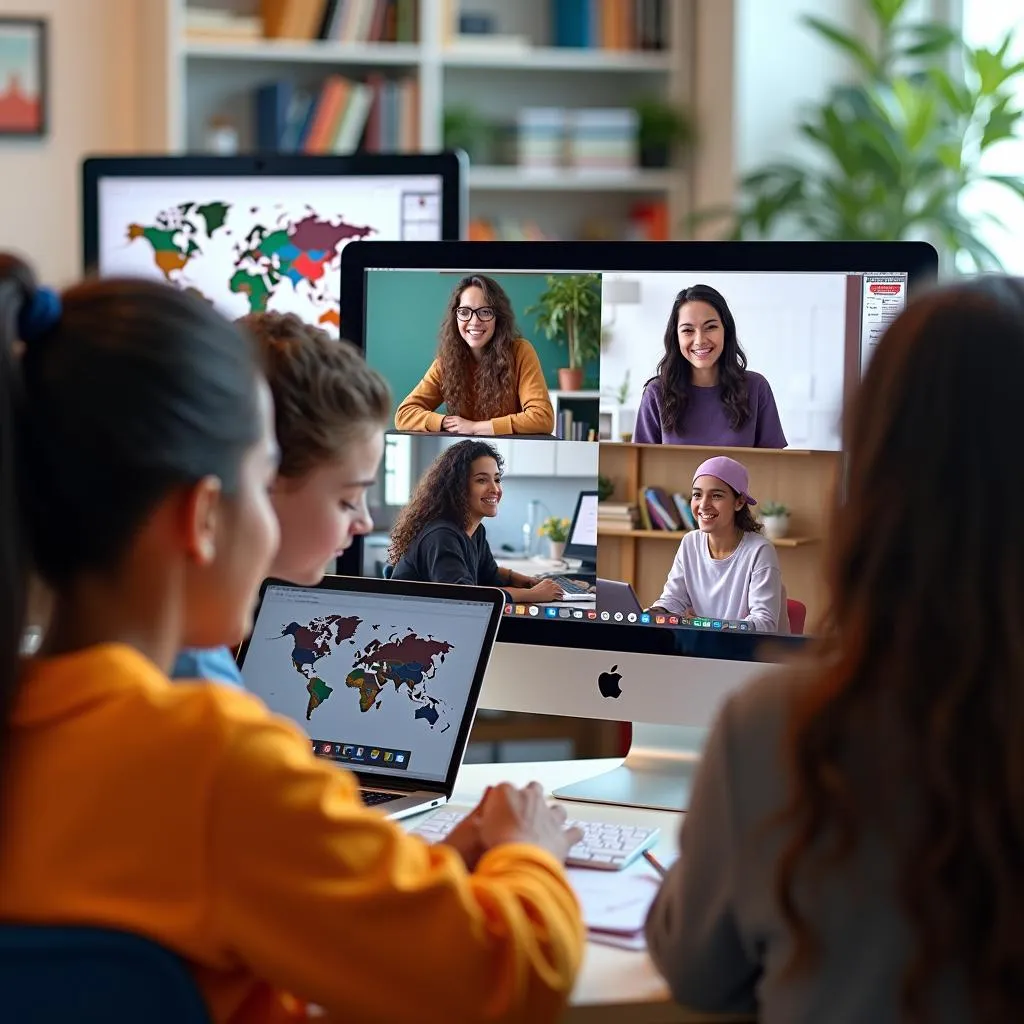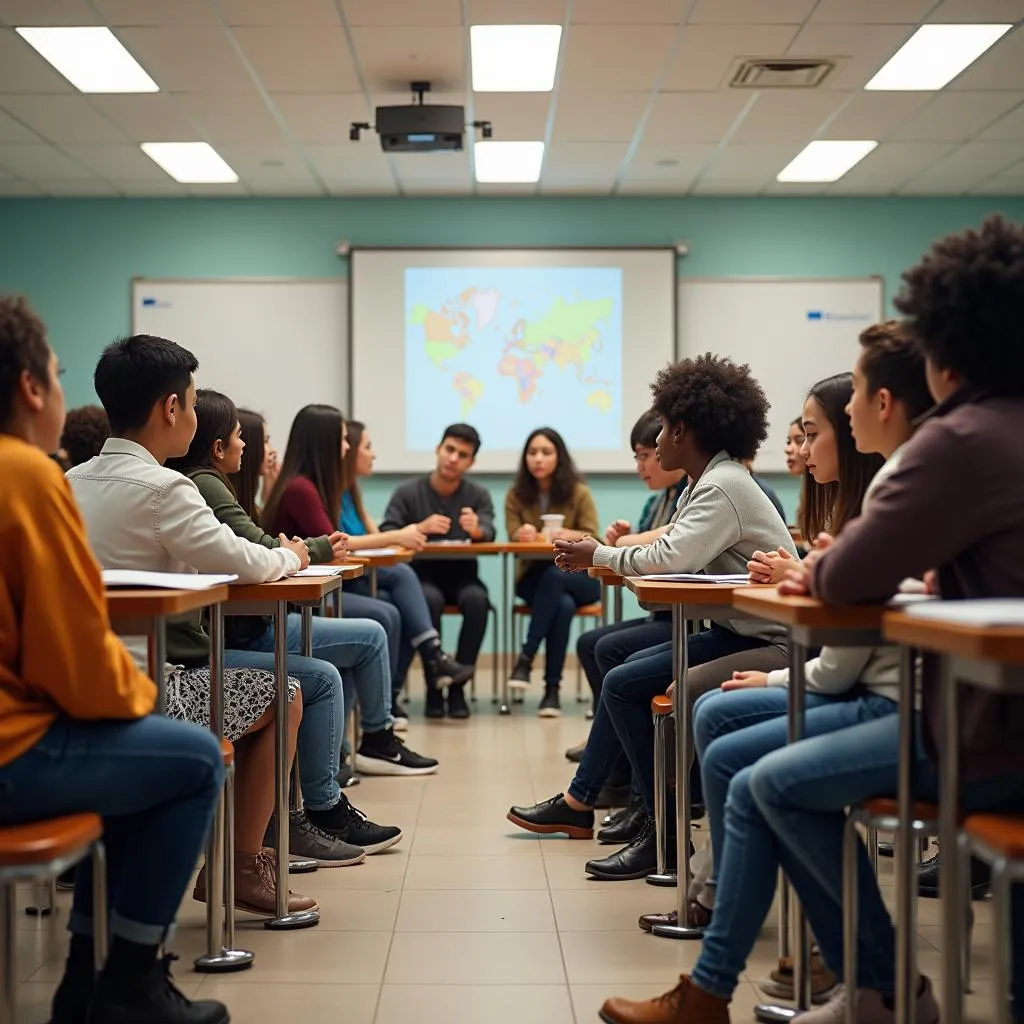Virtual libraries have revolutionized the way we access and share cultural knowledge. As an experienced IELTS instructor, I’ve witnessed firsthand how these digital repositories can enhance students’ preparation for the Reading section. Let’s explore this topic through a comprehensive IELTS Reading practice test, focusing on “The role of virtual libraries in promoting cultural knowledge.”
Nội dung bài viết
The influence of religious education on cultural perspectives is another fascinating aspect of cultural knowledge that often appears in IELTS Reading passages. However, today we’ll concentrate on virtual libraries and their impact.
Passage 1 – Easy Text
Virtual libraries have emerged as powerful tools for promoting cultural knowledge in the digital age. These online repositories offer unprecedented access to a vast array of cultural resources, including books, articles, photographs, and multimedia content. Unlike traditional brick-and-mortar libraries, virtual libraries are available 24/7, allowing users to explore cultural artifacts and information from the comfort of their homes or anywhere with an internet connection.
One of the primary advantages of virtual libraries is their ability to transcend geographical boundaries. Users can access materials from diverse cultures and regions worldwide, fostering a greater understanding of global heritage. This accessibility is particularly valuable for researchers, students, and cultural enthusiasts who may not have the means to travel or visit physical libraries in different countries.
Moreover, virtual libraries often employ advanced search and categorization systems, making it easier for users to find specific cultural information quickly. These sophisticated algorithms can help users discover connections between different cultural elements, enhancing their overall understanding of complex cultural phenomena.
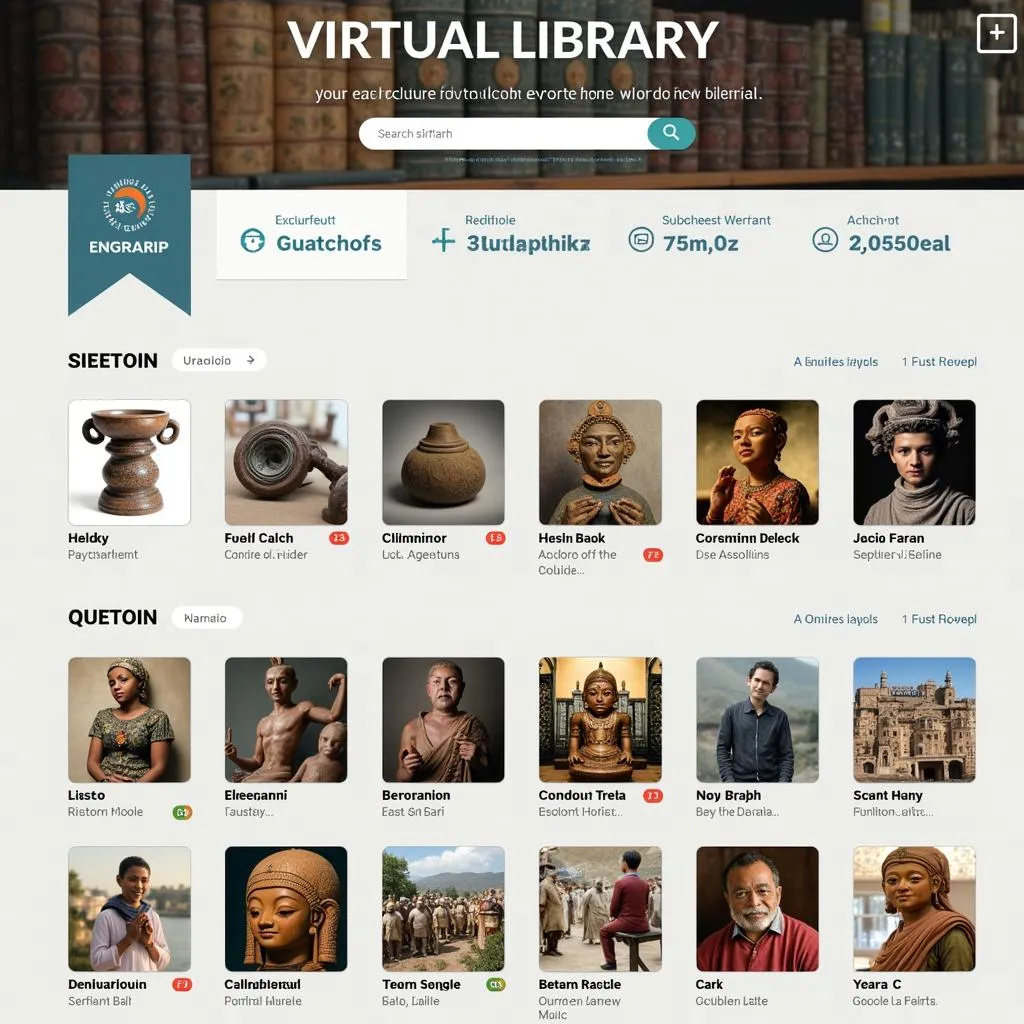 Virtual library providing access to cultural knowledge
Virtual library providing access to cultural knowledge
Virtual libraries also play a crucial role in preserving and digitizing cultural heritage. Many institutions are working to create digital copies of rare books, manuscripts, and artifacts, ensuring their longevity and making them accessible to a wider audience. This digitization process not only protects valuable cultural resources from physical degradation but also democratizes access to knowledge that was previously limited to a select few.
Furthermore, virtual libraries often incorporate interactive features that enhance the learning experience. Users can participate in online discussions, attend virtual exhibitions, and even contribute their own knowledge to collaborative projects. This participatory aspect of virtual libraries fosters a sense of community and encourages active engagement with cultural content.
Questions 1-5
Do the following statements agree with the information given in the passage? Write
TRUE if the statement agrees with the information
FALSE if the statement contradicts the information
NOT GIVEN if there is no information on this
- Virtual libraries are accessible at any time of the day.
- Traditional libraries offer more cultural resources than virtual libraries.
- Virtual libraries make it easier for people to access cultural information from different parts of the world.
- All virtual libraries use the same search algorithms.
- Some virtual libraries allow users to contribute their own cultural knowledge.
Questions 6-10
Complete the sentences below. Choose NO MORE THAN TWO WORDS from the passage for each answer.
- Virtual libraries help users discover ___ between different cultural elements.
- The process of creating digital copies of cultural artifacts is called ___.
- Virtual libraries often include ___ features to enhance user engagement.
- The availability of virtual libraries has ___ access to rare cultural resources.
- Virtual libraries can foster a sense of ___ among users interested in cultural topics.
Cultural influences on STEM education approaches can also be explored through virtual libraries, providing valuable insights for educators and policymakers alike.
Passage 2 – Medium Text
The role of virtual libraries in promoting cultural knowledge extends beyond mere access to information. These digital platforms are increasingly becoming catalysts for cross-cultural understanding and global citizenship. By providing a diverse range of cultural resources from various regions and historical periods, virtual libraries enable users to develop a more nuanced and comprehensive worldview.
One of the most significant contributions of virtual libraries to cultural knowledge promotion is their ability to preserve and showcase endangered cultural heritage. Many indigenous languages, traditional practices, and local histories are at risk of being lost due to globalization and changing societal norms. Virtual libraries serve as digital sanctuaries for these cultural elements, offering a platform for their documentation, study, and dissemination.
Moreover, virtual libraries are at the forefront of employing cutting-edge technologies to enhance the cultural learning experience. Augmented reality (AR) and virtual reality (VR) applications are being integrated into some virtual library platforms, allowing users to immerse themselves in historical environments or interact with 3D models of cultural artifacts. This technological advancement brings a new dimension to cultural education, making it more engaging and memorable.
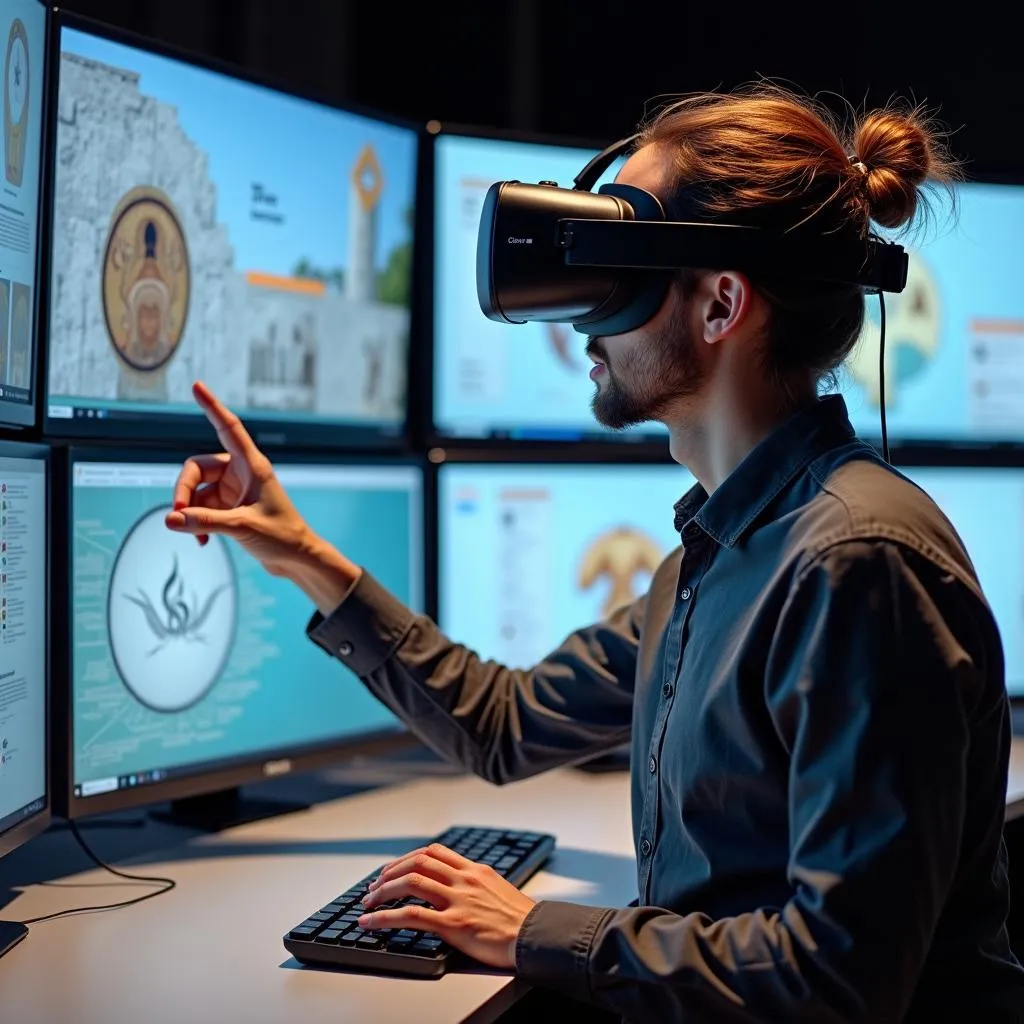 Virtual reality cultural experience in a library
Virtual reality cultural experience in a library
The collaborative nature of many virtual libraries also fosters intercultural dialogue and exchange. Users from different parts of the world can contribute their knowledge, perspectives, and experiences, creating a rich tapestry of cultural information. This crowdsourcing approach not only enriches the available content but also promotes a more inclusive and diverse representation of global cultures.
Furthermore, virtual libraries play a crucial role in supporting formal education systems. They provide teachers and students with a wealth of cultural resources that can be integrated into curricula, research projects, and extracurricular activities. This integration helps in developing cultural competence among young learners, preparing them for an increasingly interconnected world.
However, the proliferation of virtual libraries also raises important questions about digital divide and equitable access to cultural knowledge. While these platforms have the potential to democratize information, they may inadvertently exacerbate existing inequalities if access to technology and digital literacy skills are not addressed.
Questions 11-15
Choose the correct letter, A, B, C, or D.
-
According to the passage, virtual libraries contribute to cultural knowledge promotion by
A) replacing traditional libraries entirely
B) focusing solely on mainstream cultures
C) preserving endangered cultural heritage
D) limiting access to certain cultural resources -
The integration of AR and VR technologies in virtual libraries aims to
A) replace traditional reading methods
B) make cultural learning more immersive
C) reduce the need for physical cultural artifacts
D) compete with entertainment platforms -
The collaborative aspect of virtual libraries
A) is limited to professional researchers
B) focuses only on Western cultures
C) promotes intercultural dialogue
D) discourages individual contributions -
In the context of formal education, virtual libraries
A) are used exclusively for research projects
B) replace traditional teaching methods
C) support the development of cultural competence
D) are only useful for advanced students -
The passage suggests that the main challenge in using virtual libraries for cultural promotion is
A) the quality of digital content
B) the potential to widen the digital divide
C) the lack of interest from users
D) the high cost of maintaining digital platforms
Questions 16-20
Complete the summary below. Choose NO MORE THAN TWO WORDS from the passage for each answer.
Virtual libraries are revolutionizing the way we access and interact with cultural knowledge. They serve as digital (16) for endangered cultural elements, ensuring their preservation for future generations. By employing (17) , such as AR and VR, these platforms enhance the cultural learning experience. The (18) nature of virtual libraries encourages users from different backgrounds to share their knowledge, creating a diverse cultural repository. While virtual libraries support (19) by providing resources for teachers and students, there are concerns about the (20) ___ and its impact on equal access to cultural information.
Passage 3 – Hard Text
The advent of virtual libraries has ushered in a paradigm shift in the dissemination and preservation of cultural knowledge, fundamentally altering the landscape of global cultural exchange. These digital repositories, with their vast and ever-expanding collections, are not merely passive storehouses of information but active agents in shaping our understanding of diverse cultures and facilitating intercultural dialogue on an unprecedented scale.
One of the most profound impacts of virtual libraries on cultural knowledge promotion lies in their ability to democratize access to rare and historically significant cultural artifacts. Manuscripts, artworks, and archival materials that were once the exclusive domain of scholars and researchers are now accessible to a global audience. This democratization has led to a decentralization of cultural authority, challenging traditional hierarchies of knowledge production and dissemination. Consequently, marginalized voices and underrepresented cultural narratives are finding platforms for expression and recognition.
Moreover, the inherent flexibility and scalability of virtual libraries enable them to adapt rapidly to emerging cultural trends and scholarly interests. Unlike physical libraries constrained by space and resources, digital platforms can quickly curate and showcase collections on contemporary cultural phenomena, fostering a dynamic and responsive engagement with evolving cultural landscapes. This agility is particularly crucial in preserving and contextualizing ephemeral aspects of modern culture, such as digital art, social media trends, and virtual communities.
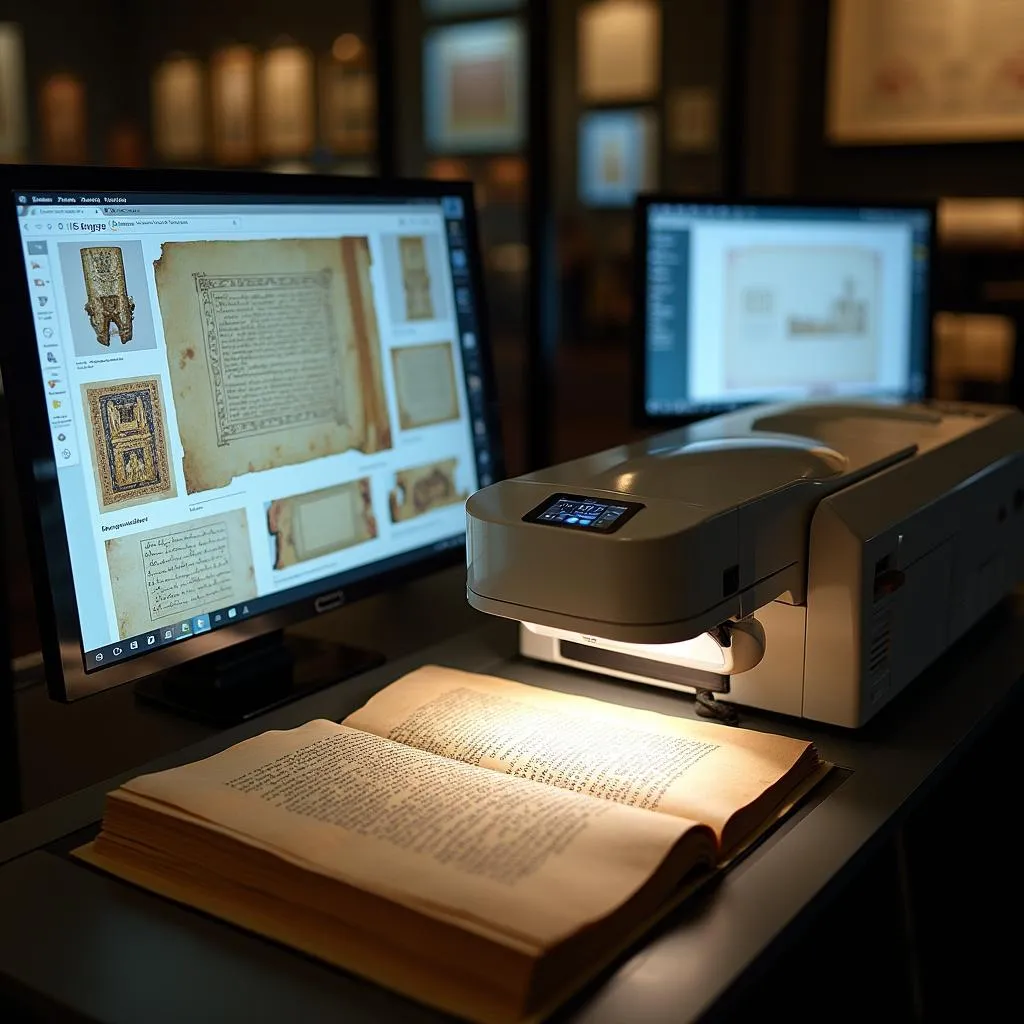 Digital preservation of cultural artifacts
Digital preservation of cultural artifacts
The integration of artificial intelligence and machine learning algorithms in virtual libraries has revolutionized the way users interact with cultural content. These technologies enable sophisticated content analysis, pattern recognition, and personalized recommendations, facilitating serendipitous discoveries and cross-cultural connections that might otherwise remain hidden. For instance, AI-powered translation tools are breaking down language barriers, allowing users to engage with cultural materials in their native tongues and fostering a more inclusive global cultural dialogue.
However, the proliferation of virtual libraries also raises critical questions about the authenticity and contextualization of digital cultural representations. The process of digitization inevitably involves decisions about what to include, how to present information, and which interpretative frameworks to employ. These choices can inadvertently perpetuate existing biases or create new forms of cultural misrepresentation. Furthermore, the reliance on digital interfaces may lead to a decontextualization of cultural artifacts, divorcing them from their original physical and social contexts.
Cultural influences on curriculum design are increasingly being shaped by the resources available through virtual libraries, highlighting the interconnectedness of digital platforms and educational practices.
The role of virtual libraries in promoting cultural knowledge also intersects with complex issues of intellectual property rights and cultural ownership. As digital repositories make cultural heritage globally accessible, questions arise about who has the right to control, interpret, and profit from cultural materials. This is particularly sensitive in cases involving indigenous knowledge, sacred artifacts, and culturally significant practices that may have been historically exploited or misappropriated.
In conclusion, while virtual libraries offer unprecedented opportunities for cultural knowledge dissemination and preservation, they also present new challenges that require careful navigation. The future of these digital platforms in promoting cultural knowledge will depend on their ability to balance accessibility with respect for cultural contexts, to foster genuine intercultural understanding, and to address the ethical implications of digitizing and globalizing cultural heritage.
Questions 21-26
Complete the summary below. Choose NO MORE THAN TWO WORDS from the passage for each answer.
Virtual libraries have transformed the landscape of cultural knowledge dissemination by (21) access to rare cultural artifacts. This has led to a (22) of cultural authority, allowing for more diverse cultural narratives. The flexibility of virtual libraries enables them to quickly adapt to (23) and preserve aspects of modern culture. The use of (24) in these platforms has revolutionized user interaction with cultural content, facilitating unexpected discoveries. However, concerns exist about the (25) of digital cultural representations and the potential for (26) of cultural artifacts from their original contexts.
Questions 27-30
Choose FOUR letters, A-G. Which FOUR of the following are mentioned in the passage as challenges or concerns related to virtual libraries and cultural knowledge promotion?
A) Limited storage capacity for digital content
B) Potential perpetuation of cultural biases
C) High costs of maintaining virtual library platforms
D) Issues of intellectual property rights
E) Lack of interest from younger generations
F) Decontextualization of cultural artifacts
G) Difficulty in updating digital collections
Questions 31-35
Do the following statements agree with the claims of the writer in the passage? Choose
YES if the statement agrees with the claims of the writer
NO if the statement contradicts the claims of the writer
NOT GIVEN if it is impossible to say what the writer thinks about this
- Virtual libraries have completely replaced traditional physical libraries in cultural knowledge dissemination.
- The flexibility of virtual libraries allows them to respond quickly to new cultural trends.
- Artificial intelligence in virtual libraries can help users discover unexpected cultural connections.
- The digitization of cultural artifacts always provides a fully accurate representation of the original item.
- The global accessibility of cultural materials through virtual libraries has resolved all issues of cultural ownership.
Questions 36-40
Complete the sentences below. Choose NO MORE THAN TWO WORDS from the passage for each answer.
- Virtual libraries challenge traditional ___ of knowledge production and dissemination.
- The ___ of virtual libraries allows them to quickly adapt to new cultural phenomena.
- AI-powered ___ tools help break down language barriers in accessing cultural content.
- The process of digitization involves decisions that can affect the ___ of cultural representations.
- Issues of ___ are particularly sensitive when dealing with indigenous knowledge and sacred artifacts.
Answer Key
Passage 1
-
TRUE
-
FALSE
-
TRUE
-
NOT GIVEN
-
TRUE
-
connections
-
digitization
-
interactive
-
democratized
-
community
Passage 2
-
C
-
B
-
C
-
C
-
B
-
sanctuaries
-
cutting-edge technologies
-
collaborative
-
formal education
-
digital divide
Passage 3
-
democratizing
-
decentralization
-
emerging cultural trends
-
artificial intelligence
-
authenticity
-
decontextualization
-
B, D, F, G
-
NOT GIVEN
-
YES
-
YES
-
NO
-
NO
-
hierarchies
-
scalability
-
translation
-
authenticity
-
cultural ownership
This comprehensive IELTS Reading practice test on “The role of virtual libraries in promoting cultural knowledge” covers various aspects of the topic, from basic concepts to complex issues. By engaging with this material, you’ll not only enhance your understanding of virtual libraries but also improve your IELTS Reading skills. Remember to time yourself and review your answers carefully to maximize your learning experience.
